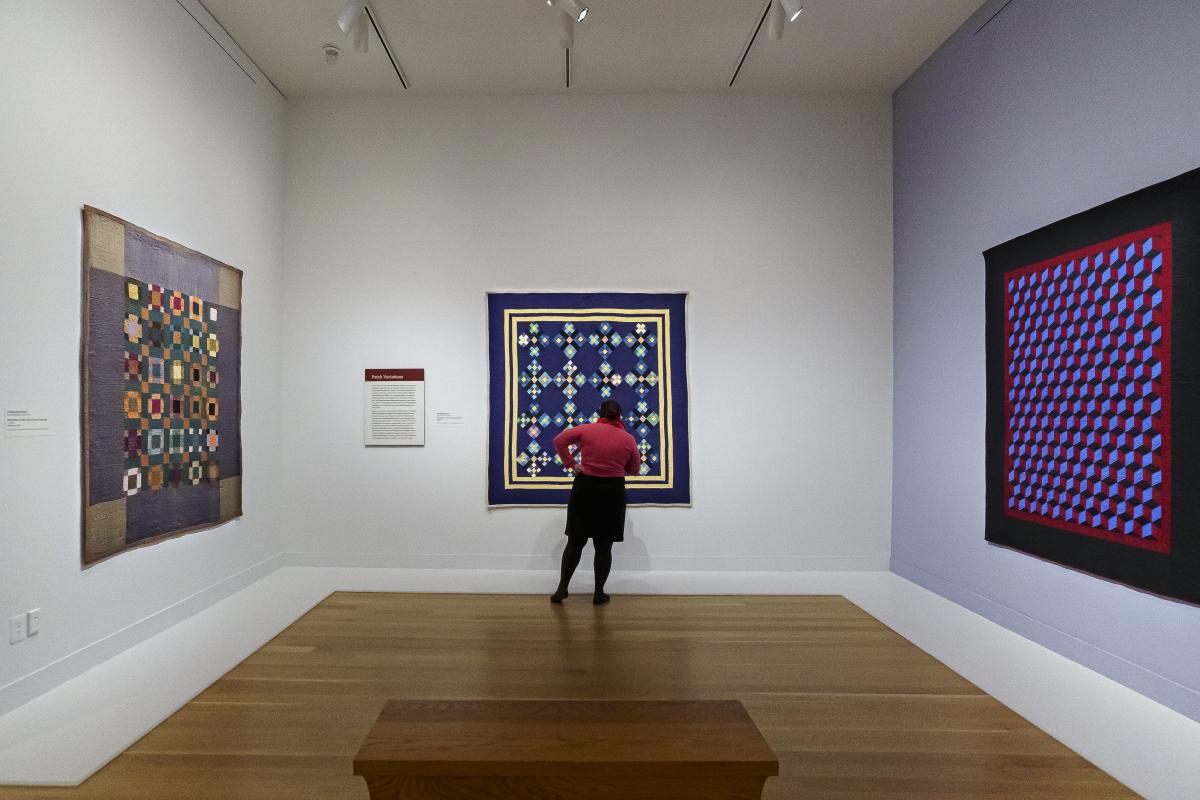Did you know the Smithsonian American Art Museum has the largest collection of Amish quilts of any art museum? This is thanks to Faith and Stephen Brown, who began collecting quilts in 1977, four years after encountering Amish quilts for the first time in the exhibition American Pieced Quilts at SAAM’s Renwick Gallery. Fast forward almost 45 years later to the announcement that the Browns would donate their exemplary collection to the museum. From this generous gift came the 2024 exhibition Pattern and Paradox: The Quilts of Amish Women, a stunning display of 50 quilts, including 39 from the museum’s collection and 11 promised gifts. Around 100 additional quilts from the Browns’ collection are promised to the museum as a bequest.
The exhibition looks beyond quilting as a utilitarian practice. It reveals historical quilting among the Amish as an aesthetic endeavor that walked a line between cultural and individual expression. The quilts paradoxically twin the plain with the spectacular, tradition with innovation, and a dismissal of personal pride with objects often seen as extraordinary artworks.
In a new video, hear directly from the Browns about their collecting journey, and learn more about this beautiful and vibrant quilt collection from Janneken Smucker, a professor of history, cultural historian, and a fifth generation Mennonite quiltmaker of Amish Mennonite heritage. Smucker guides you through the tradition and artistry of the Amish quiltmaking practice. In the late nineteenth century, Amish women adopted an art form already established within the larger American culture and made it distinctly their own, developing community and familial preferences, with women sharing work, skills, and patterns.
Smucker explores how the quilts, which were pieced together with precise skill by women artists for everyday use in the home, became celebrated art objects in the mid-twentieth century. Amish quilt makers embraced strikingly bold designs and patterns with intricate stitching connecting the three layers of material. In the late 1960s, art enthusiasts made connections between the quilts and the abstract art that was popular at the time. By the 1970s, Amish quilts were included in exhibitions at major art museums, becoming among the first types of quilts to cross the line between craft and fine art.
Pattern and Paradox celebrates the quilts, the women who made them, the collectors who preserved and donated them, and considers the unique role of Amish quilts in American art today.
























